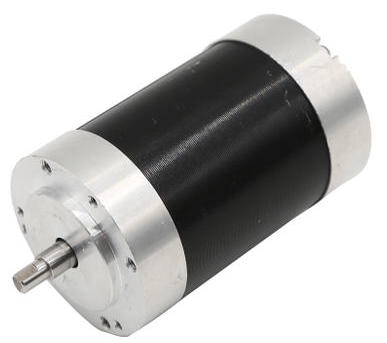Views: 0 Author: Site Editor Publish Time: 2021-09-09 Origin: Site








If the wires are switched, the motor will rotate in the opposite direction. To control the spin direction of a DC motor without changing the connection of the leads, a circuit called an H bridge can be used. The H bridge is an electronic circuit that can drive the motor in both directions. How to change direction of dc motor?
This passage is going to talk about the followings of DC motor:
(1) Direction of rotation of DC motor
(2) Principle of changing direction - Fleming's Left Hand Law
(3) Tools for DC motor direction change
The magnitude of the force borne by the conductor in the motor is given by the following formula:
F = B l I Newton (N)
B = The magnetic flux density caused by the magnetic flux generated by the field winding.
l = the effective length of the conductor.
I = the magnitude of the current passing through the conductor.
The direction of this force, that is, the direction of rotation of the motor, can be determined by Fleming's left hand. Therefore, Fleming's right-hand rule is to determine the direction of induced electromotive force to produce an effect, and Fleming's left-hand rule is to determine the direction of the experienced force, that is, for action.

The rule states: "Extend the three fingers of the left hand, the ring finger, the middle finger and the thumb so that they are perpendicular to each other. Now, point the first finger in the direction of the magnetic field and the middle finger in the direction of the current, and then the thumb gives the force that the conductor bears. Direction.
If the direction of the main field where the current-carrying conductor is located is opposite, the force on the conductor will be reversed. Similarly, while keeping the main flux direction unchanged, the direction of current through the conductor is opposite. The force on the conductor reverses its direction. However, if the two directions are opposite, the direction of the force will remain the same.
Key point: Therefore, in an actual motor, to reverse its rotation direction, the direction of the main magnetic field generated by the field winding will be reversed, or the direction of the current flowing through the armature will be reversed.
The direction of the main magnetic field can be reversed by changing the direction of the current flowing through the field winding. This can be achieved by swapping the polarity of the power supply to the field winding. In short, to produce a dynamic effect, there must be two magnetic fluxes, and their interaction produces torque.
A DC or DC motors are the most common type of motors. A DC motor usually has only two leads, one is the positive electrode and the other is the negative electrode. If you connect these two wires directly to the battery, the motor will spin. If the wires are switched, the motor will rotate in the opposite direction.
To control the spin direction of a DC motor without changing the connection of the leads, a circuit called an H bridge can be used. The H bridge is an electronic circuit that can drive the motor in both directions. H-bridges are used in many different applications, the most common of which is to control motors in robots. It is called the H-bridge because it uses four transistors, which are connected in a way that makes the schematic look like "H". You can make this circuit using discrete transistors.
